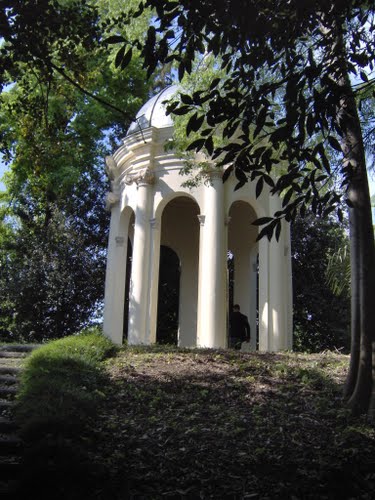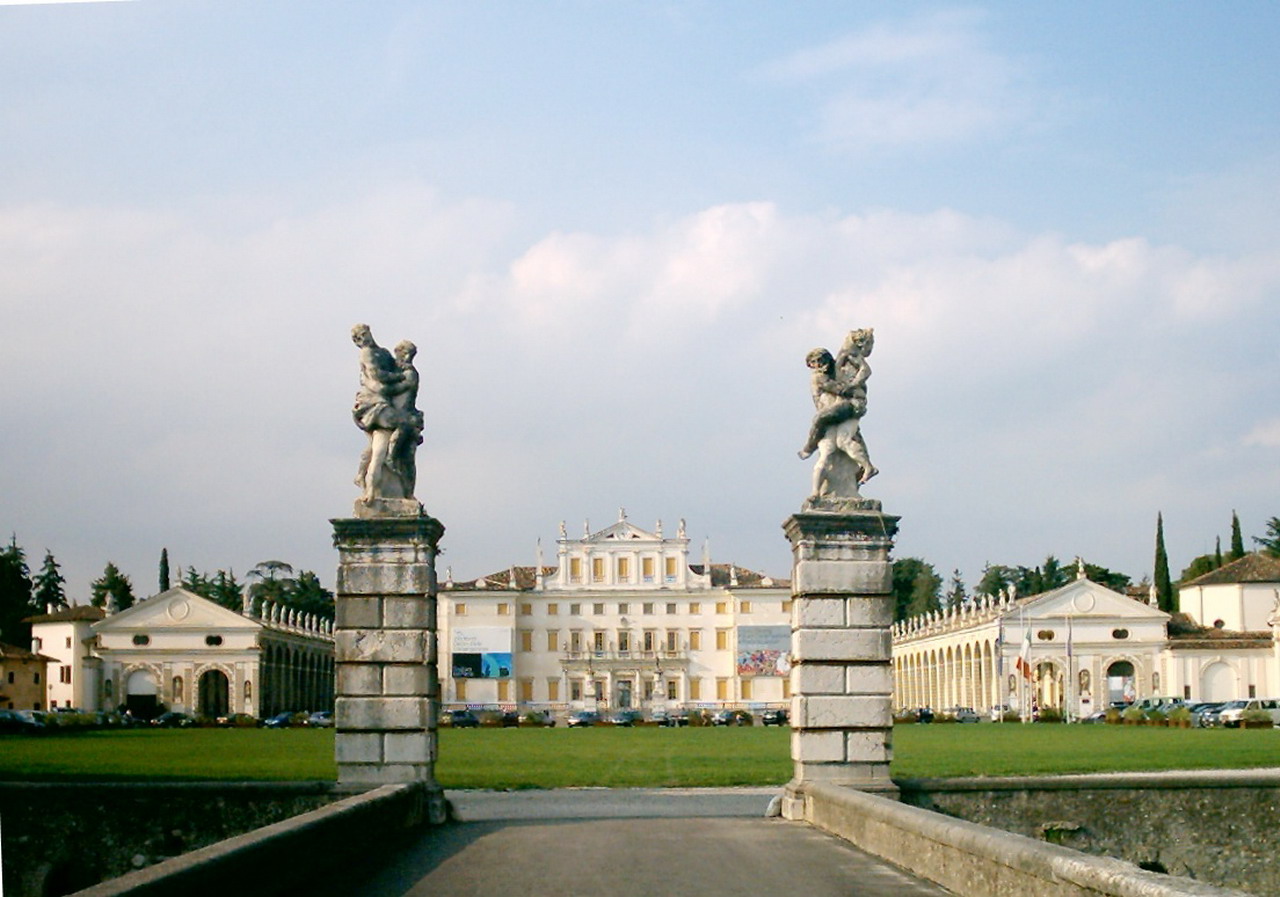
Villa Manin
This post is also available in:
 Italiano (Italian)
Italiano (Italian)
The first garden created for Villa Manin dates back to 1670, along with most of the buildings that are still part of today’s compound: the whole central building, still without the side stairwells, its wings erected towards the rear (known as “Foresteria”), and the wings for the guests along with their towers.
Originally, a fourth body was inserted between the towers, thus enclosing in a courtyard-like shape the garden; the latter, in turn, had a central opening leading to its back, probably shaped a loggia or a terrace.
Probably the only one of its kind – in the secular European architecture of that time, Villa Manin was fitted with the noble floor and all its most important rooms on the very ground level. Its façade, whose richly framed windows rest on most striking suspended balustrades, conveys the first impression of conventional architecture. The latter would feature the noble quarters on the first floor, although in our case only bedrooms were put there. As previously mentioned, the living and activity rooms were actually placed on the ground floor.
It was probably the architect Leon Battista Alberti (1404-1472) to give these peculiar recommendations, thus building a lower and wider abode, with a huge party room and a monumental façade, while respecting the contemporary Venetian tradition.
The new garden
The very Baroque conception of the garden clearly tells the surrounding countryside – a pretty rough and wild place – from the sophisticated garden, rich with culture and taste. An artificial island, miniature fortified cities, labyrinths, pavilions, allegorical hills, theaters, animal enclosures, and ice cellars were thus included in this beautiful garden surrounded and protected by a fencing wall.
In 1809, Gianantonio Selva was asked by the Manin family to rebuild the garden.
The project involved the transformation of the previous Baroque facility into a reorganized garden in full compliance with the typical XIX century features and taste.
The garden thus acquired a brand-new look: it lost its pure scenographic function and started looking like an idyllic and secluded space.
Fencing walls were overtaken as well, thus completely eliminating the Baroque legacy, while the garden became a part of the surrounding landscape. Visitors were no more “prisoners” of the garden and could roam freely throughout the whole area made of artificial and natural environments.
The romantic garden by Pietro Quaglia
In 1863, the finest hour of Italian patriotism, Pietro Quaglia redesigned the garden for the Manin family. He created a central miniature of the Italian Peninsula while turning the whole area into a romantic garden. Quaglia was also able to minimize the visual connection with the fencing walls and their Baroque doors, by planting trees along the side of the Italian Peninsula.
In addition, he introduced a new landscape element recalling the Alps on the horizon: he built the Olympus Lake with its conifers, located on the northern edge that serves as a backdrop to the Baroque artificial mounds.
This post is also available in:
 Italiano (Italian)
Italiano (Italian)
Contatti
Piazza dei Dogi 7, Passariano - 33033 Codroipo(UD)
0432 822111
Altre info
1,00 euro.
L'orario di apertura del Parco di Villa Manin varia a seconda del tramonto e secondo gli orari delle mostre ospitate in Villa Manin. Durante i mesi in cui vige l'ora solare, il parco chiude alle ore 18.00; mentre durante i mesi di ora legale chiude alle ore 17.00.




